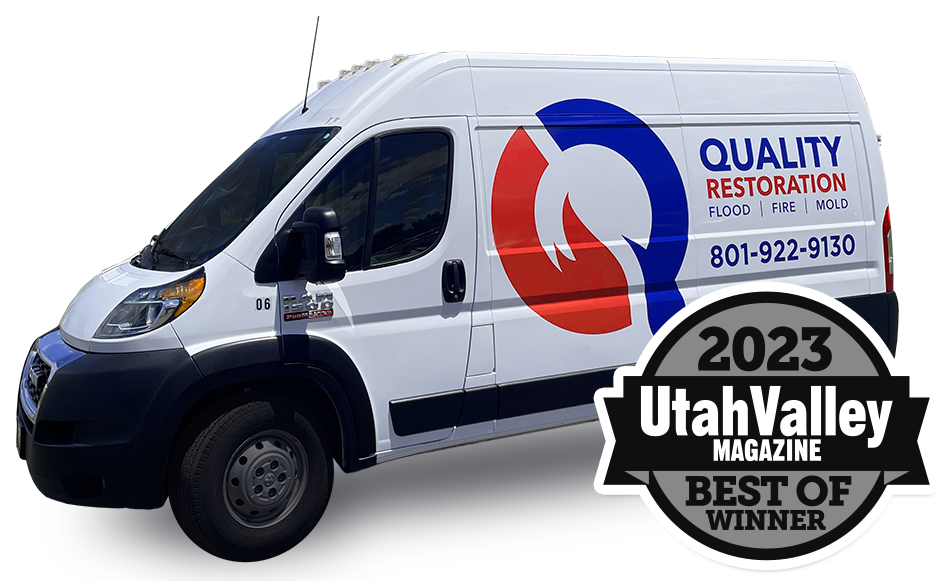Ever wondered what to do when water suddenly leaks through your walls? It’s important to act fast to avoid mold and damage to your home’s structure. Finding the leak’s source and fixing it right away is key. Tools like moisture meters and infrared cameras can help you find leaks quickly.
Key Takeaways
- Immediate action is essential to mitigate water damage and mold prevention.
- Correct identification of the leak’s source is critical for effective wall leak repairs.
- Homeowners should utilize tools like moisture meters and infrared cameras to locate leaks.
- Preventive measures in home maintenance help avoid future plumbing issues.
- Professional help might be necessary for extensive damage and repair works.
Identifying Signs of a Water Leak in Your Walls
Spotting a water leak in your walls early is key to avoiding big damage costs. Homeowners should watch for any odd signs that might show a hidden leak.
Common Indicators
Look out for wet or discolored drywall, water-stained trim, and damp masonry. Musty smells, mold, and mildew are also signs. Puddles or drips near walls or from the ceiling can mean a leak too. Knowing these signs is the first step to finding leaks.
Using Tools to Detect Leaks
For better leak detection, use tools like moisture meters and infrared cameras.
- Moisture Meters: These devices check if walls have too much moisture, which might mean a leak.
- Infrared Cameras: Great for finding hidden leaks behind walls and ceilings. They spot temperature changes from moisture.
Using these tools helps find leaks early and stops water damage from getting worse.
Determining the Source of the Leak
Finding where wall leaks come from means looking at both inside and outside factors. It’s about a detailed search to find the leak’s exact spot and fix it right.
Indoor and Outdoor Sources
Leaks inside walls can come from bad pipes or connections. To spot indoor leaks, turn off all water-using appliances. Then, check the water meter reading. If it goes up after a few hours, it might mean a leak.
Outdoor leaks are trickier. They can come from clogged gutters, downspouts, or roof problems. Also, broken sprinkler pipes and bad drainage can send water towards your house, making things worse.
Inspection Methods
A good home inspection is key to finding leaks. For indoor leaks, seal all water outlets and watch the water meter. This can show if there’s a leak.
For outdoor checks, look at gutters and downspouts for blockages or leaks. Also, check the roof for damage or missing shingles. And, check below-grade areas for broken sprinkler pipes or drainage problems.
Using these methods can help fix plumbing issues and stop future damage.
Steps to Fix a Plumbing Leak Behind a Wall
Fixing a plumbing leak behind a wall can seem tough. But, with a clear plan, it’s doable. It’s important to follow the right steps to avoid more damage and fix it right.
Shutting Off Water Supply
When you have a leak, acting fast is key. First, turn off the water supply. Find the main valve and switch it off to stop water from flowing.
Cutting Into the Wall
After turning off the water, finding the leak’s exact spot is crucial. You might need to cut into the wall to see the pipes. Use the right tools to avoid too much damage. If you’re doing it yourself, be careful not to make the problem worse.
Professional Help
For tricky leaks or those in plaster, tile, or brick walls, get help from pros. They know how to find and fix the leak right. They can also fix the wall, making sure it looks and works like new.
Knowing when to ask for help is important. Plumbing emergencies need quick, expert action to avoid big problems. Getting professionals can save time and ensure the job is done right, avoiding future leaks.
Addressing Exterior Leaks
Dealing with exterior water seepage needs a proactive approach. Regular gutter and downspout cleaning is key. Clogged gutters can overflow, leading to roof leaks and wall damage. Adjusting downspouts ensures water flows away from the foundation, reducing seepage risk.
Inspecting and maintaining your roof is crucial. Look for missing shingles or damaged flashing, common leak sources. Reapplying caulk to worn-out areas helps protect against water.
Ground-level leaks often stem from various sources. Faulty sprinkler systems can add to moisture around the foundation. Extending downspouts helps guide water away. Also, adjusting the property’s grading ensures water flows naturally, away from the house.
When moisture persists, especially in basements, sealing and waterproofing are needed. These steps create a strong barrier against water, protecting your home’s interior from moisture damage.
Preventive Measures to Avoid Future Leaks
To keep your home leak-free, you need to take proactive steps. Regular checks and smart home upgrades can help a lot. This way, you can avoid sudden water damage.
Regular Maintenance
Keeping up with maintenance is key to stopping leaks. Here are some important tasks:
- Cleaning gutters to prevent water buildup
- Inspecting and refreshing exterior caulking
- Testing sump pumps periodically
- Replacing any missing roof shingles promptly
- Examining pipes, particularly those susceptible to freezing
Home Improvements
Smart home upgrades can also help fight leaks. Think about these improvements:
- Replacing old piping with PEX piping for added durability
- Insulating pipes in exterior walls to prevent freezing
- Regulating water pressure to avoid stress on plumbing
- Installing leak detection devices for early warning systems
With careful preventive care, you can manage and lower leak risks. This protects your home and keeps you worry-free.
Conclusion
Fixing a wall leak starts with spotting its signs and finding where it comes from. Homeowners can use tools to detect leaks and figure out if they’re inside or outside. This helps decide how to fix the problem.
When a leak is found, it’s important to act fast. Turn off the water and fix the leak right away. If it’s hard to find the leak, getting help from professional restoration and plumbing companies is a good idea. Regular checks and upkeep can also stop leaks before they start.
Being careful and getting help when needed keeps your home safe from water damage. Keeping up with maintenance and making improvements helps avoid leaks. Quick action and prevention save money and keep your home safe and sound.




















